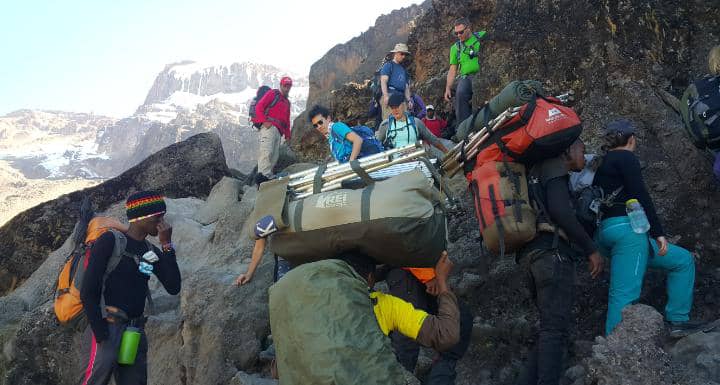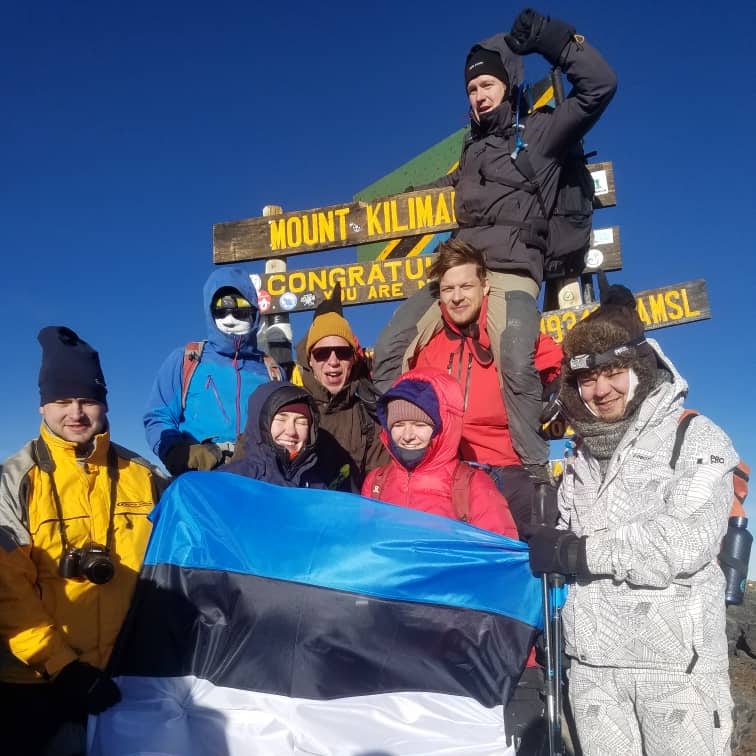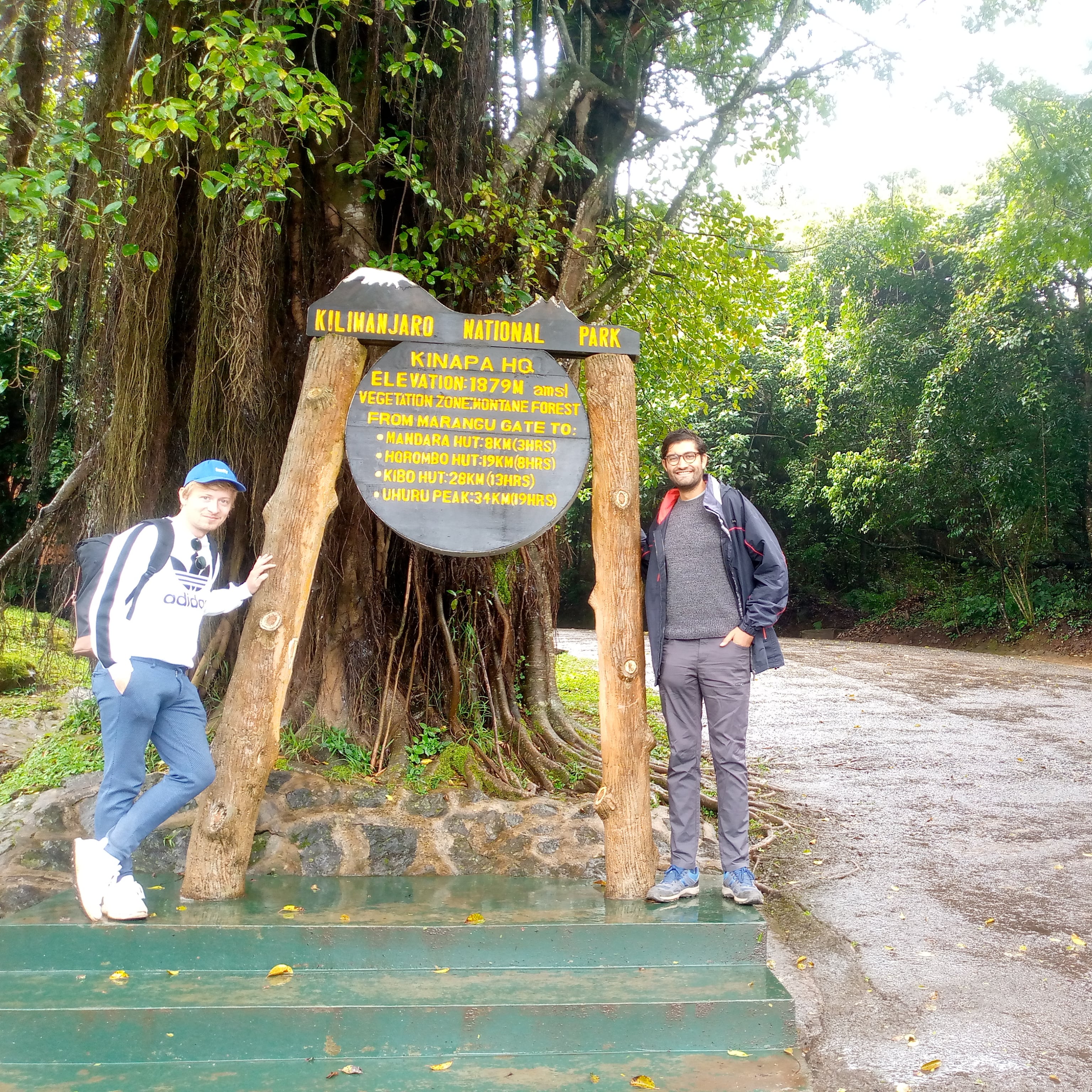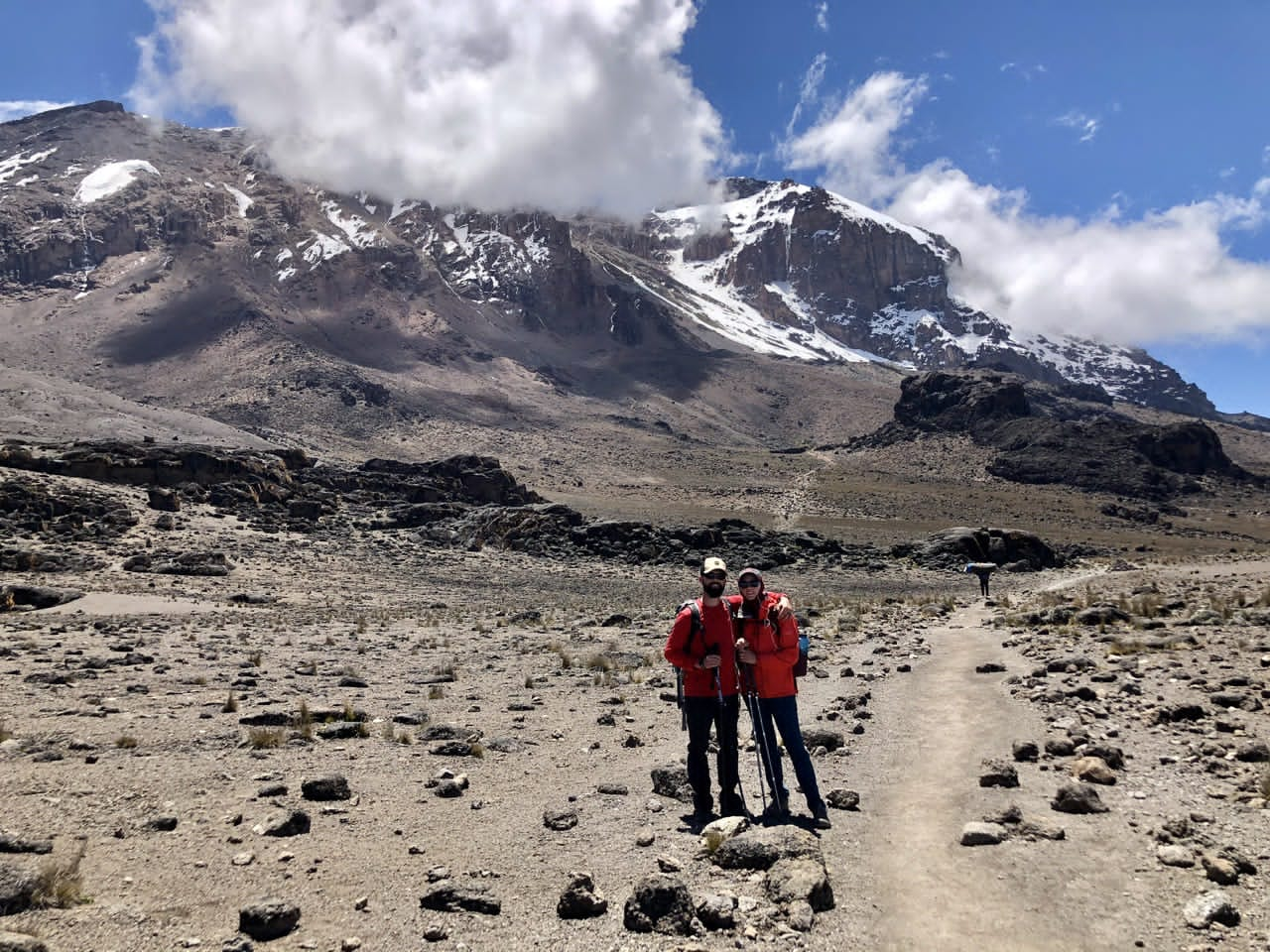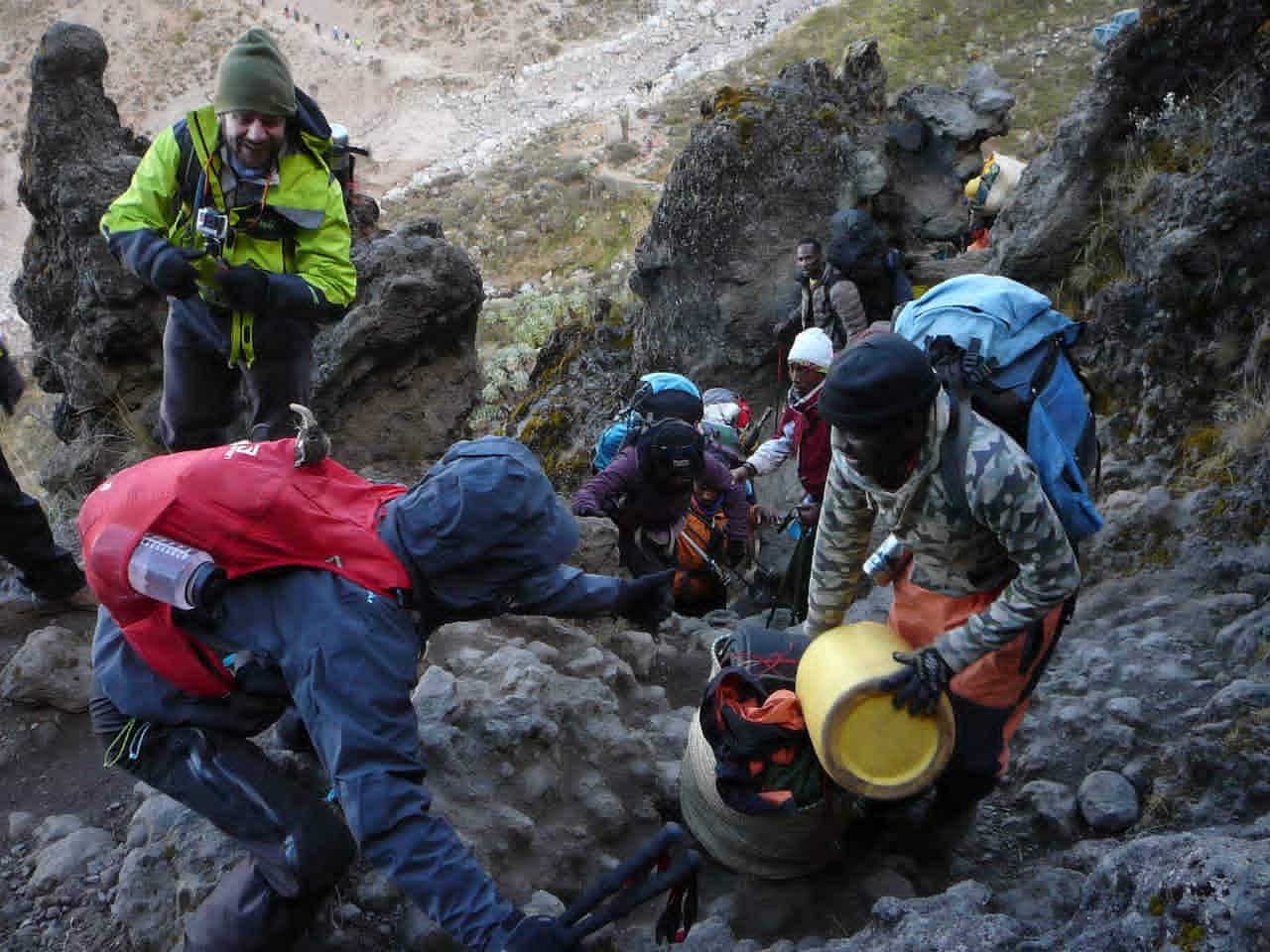Climbing Mt.Kilimanjaro 7 Days Lemosho Route Overview.
The Lemosho Route, located on the western side of Mount Kilimanjaro, begins with lush, green vegetation and a fertile rainforest. This marks the first ecological zone you’ll encounter as you ascend Africa’s tallest mountain. The journey starts at Mti Mkubwa (Big Tree Camp) and continues to Shira One, crossing the breathtaking Shira Plateau, which was once the third peak of Kilimanjaro before it collapsed. From here, the trail leads northeast to Shira II Hut, offering an excellent opportunity for acclimatization through short hikes.
Next, the route ascends to Lava Tower and descends into the stunning Barranco Valley, known as one of the most picturesque sections of the trek. After conquering the impressive Barranco Wall, the trail circles along the Southern Circuit, passing Karanga Camp before reaching Barafu Hut, the high camp and base for the summit attempt. For a 7-day climb via the Lemosho Route, tourists will skip Shira One campsite and hike directly from Mti Mkubwa to Shira Two, which will be a challenging 17 km hike for a full day.
The summit push begins in the early morning hours, often under the light of a full moon, creating a magical yet challenging experience. This section is the coldest and windiest part of the trek, but as the sun rises, climbers can shed their extra layers and enjoy incredible vistas. After reaching the summit, the descent takes you back to Barafu Camp and continues along the Mweka Trail to Mweka Hut, marking the end of your Kilimanjaro adventure. For Complete Itinerary and Details for the 7-Day Kilimanjaro Climb via the Lemosho Route, click the link below.
DAY-1 : MOSHI TOWN-LEMOSHO GATE TO MTI MKUBWA.
Starting 900m Moshi Town.
Ending 1800m Londorosi Gate.
Altitude gain 900m.
Driving distance 85 km.
Driving hours 2-3 Hours.
In the morning, after breakfast, we will depart from Moshi and drive to the Lemosho Gate at Kilimanjaro National Park. Upon arrival, we will complete the registration process for your Kilimanjaro trekking adventure.
Before starting the trek, there will be some preparation time as the team of guides, chefs, and porters organizes supplies for the eight-day journey. This includes sorting out essential gear and provisions, with the exception of meals, as fresh food will be replenished from town after three days on the mountain. While waiting, this is the perfect opportunity to enjoy your lunch in the serene surroundings of the Lemosho Gate. The preparation process typically takes 1–2 hours before we embark on our journey.
LEMOSHO TO MTI MKUBWA CAMP.
Starting 1800m Lemosho Gate.
Ending 2750m Mti Mkubwa Camp.
Altitude gain today 1200m.
Trekking distance 6kms.
Walking hours 3-4 hours.
Overnight hut Mti Mkubwa Camp.
Elevation Zone Rainforest/MontaneForest.
Once the team and registration are ready, we will start our trek, crossing through the lush and thick rainforest. Along the way, you’ll encounter towering eucalyptus trees, a variety of birdlife, and colobus monkeys. The trail also showcases the vibrant beauty of flowers such as Impatiens Kilimanjari and Impatiens pseudo-viola, adding bursts of color to the scenery.
As we move through the rainforest, there is always a possibility of rain, which can make the trail muddy and slippery. To ensure a safe and comfortable hike, gaiters and trekking poles are highly recommended. While shorts and T-shirts are generally suitable for this stretch, it’s essential to have your rain gear and warmer clothing readily available.
DAY-2 : MTI MKUBWA CAMP TO SHIRA TWO (II) CAMP.
Starting elevation 2750m Mti mkubwa Camp
Ending elevation 3920m Shira One (1) Camp
Altitude gain today 870m
Trekking distance 17kms
Walking hours 8-10 hours
Overnight hut Shira Two (2)
Elevation Zone Heather and Moorland
Soon after breakfast, the team will leave the rainforest behind at Mti Mkubwa Camp and continue through the gentle heather and moorland zone, ascending a steep rocky ridge known as Mgongo wa Tembo, which translates to "the back of the elephant" in Swahili. This path leads us to Shira One and the Shira Plateau, where we will be able to see Kilimanjaro’s Great Western Breach and its glaciers. The trail today is dusty, narrow, and steep, with the possibility of encountering dark obsidian rock along the way.
Upon reaching Shira One, we will take a lunch break before proceeding across the plateau of grassy moorland and heather, which is scattered with volcanic rock formations. You will also pass by the impressive Senecio kilimanjari, which can grow more than 9 meters high, along with other unique plants such as lobelia, gladiolas, and wild protea.
The night at this bare camp will be colder than the previous night, with temperatures dropping well below freezing. Be sure to add extra layers before you sleep to ensure a comfortable night’s rest.
DAY-3 ; SHIRA TWO CAMP TO BARANCO CAMP
Starting elevation 3950m Shira Two Camp
Acclimatization point 4600m Lava Tower Camp
Ending elevation 3920m Baranco Camp
Altitude gain today 980m
Trekking distance 10kms
Walking hours 6-7 hours
Overnight hut Baranco Camp
Elevation Zone Moorland and semi-desert zone
From Shira Two Camp, the team will continue east up a steep and rocky trail to Lava Tower Camp at 4,600 meters. This trek is longer and can be tough for some tourists. The Lava Tower is a significant rock formation left behind after glaciation, and it is typically around this point that some climbers may begin to experience symptoms of Acute Mountain Sickness (AMS), such as breathlessness, irritability, and headaches.
Lunch will be served at Lava Tower before we descend nearly 680 meters to Barranco Camp at 3,920 meters. Barranco Camp is renowned for its stunning landscapes, offering excellent opportunities for beautiful photographs. It is considered one of the most picturesque camps on Kilimanjaro, serving as a major junction where four routes converge on the way to the summit. The beauty and atmosphere of Barranco Camp make it an unforgettable stop on your Kilimanjaro adventure.
DAY-4 ; BARRANCO CAMP TO KARANGA HUT
Starting elevation 3920m Baranco Camp
Acclimatization point 4280m Top of Barranco Camp
Ending elevation 4010m Karanga Camp
Altitude gain today 270 m
Trekking distance 5 km
Walking hours 4-5 hours
Overnight hut Karanga Camp
Elevation Zone Moorland and Alpine Desert zone
Today's trek is a shorter and enjoyable journey of about 5km, offering breathtaking afternoon views.
The day begins with one of the most challenging sections of the route—the ascent of the Barranco Wall, often referred to as the "Breakfast Wall" as it’s tackled shortly after breakfast. Though it may appear daunting from a distance, the climb is surprisingly manageable due to the zig-zag path that makes the ascent more accessible. The climb involves some light rock scrambling, adding a touch of adventure.
At the top of Barranco Wall, climbers will find themselves above the clouds, rewarded with stunning panoramic views of the Heim Glaciers, Kerstin Glaciers, and the striking mountain landscape. From here, the trail becomes gentler, with a series of ups and downs as you walk along a ridge that showcases the stark beauty of the desert contrasted with patches of vegetation. The trek continues until reaching Karanga Camp, a spot designed for acclimatization and rest. This shorter day is crucial for adjusting to the altitude, improving the chances of successfully summiting Mount Kilimanjaro’s highest point.
DAY-5 ; KARANGA CAMP TO BARAFU CAMP
Starting elevation 4010m Karanga Camp
Ending elevation 4600m Barafu Camp
Altitude gain today 590m
Trekking distance 4kms
Walking hours 3-4 hours
Overnight hut Barafu Camp
Elevation Zone alpine-desert zone
Today's hike is the shortest, covering just 4 kilometers, but it brings you tantalizingly close to the summit of Mount Kilimanjaro. As you ascend, the air becomes noticeably thinner due to the high altitude, which may cause heavy breathing. However, the trek leader will adjust the pace to ensure everyone acclimatizes properly and can manage the climb uphill.
Barafu Camp, your destination, is perched on an exposed ridge with a rough, rocky terrain that offers stunning views of the surrounding landscape. Upon arrival at Barafu Camp, you will have lunch and spend the afternoon resting to conserve energy for the final ascent. An early dinner will be served before heading to bed for a few hours of sleep. At midnight, the most challenging and rewarding part of your adventure begins—the summit attempt to Uhuru Peak, the highest point on Mount Kilimanjaro and the entire African continent.
DAY-6 : BARAFU CAMP TO SUMMIT BACK TO BARAFU CAMP
Starting elevation 4600m Barafu Camp
Via Stella elevation 5720m Stella point
Ending elevation 5895m UHURU PEAK
Altitude gain today 1295m
Trekking distance 5-7kms
Walking hours 6-8 hours
Elevation Zone desert zone ice-capped summit
The climb from Barafu Camp (4,600m) to Stella Point (5,720m) is the most mentally and physically demanding section of your Kilimanjaro trek. This leg of the journey typically begins at midnight, under the clear, starlit sky. Despite the difficulty, reaching Stella Point will bring an overwhelming sense of accomplishment—this is the moment when you truly feel that it’s "Kilimanjaro time."
The ascent to Stella Point is long and challenging, but once there, you’ll know the hardest part is behind you. Stella Point marks the top of the crater ridge, but it is not the ultimate summit of Kilimanjaro. From here, Uhuru Peak (5,895m), the mountain’s highest point, is within reach.
The trek from Stella Point to Uhuru Peak takes an additional 45 minutes to 1 hour, and this stretch is significantly easier. Standing at Uhuru Peak, you’ll revel in the incredible achievement of climbing the highest free-standing mountain in the world and the "Roof of Africa." This is the moment to take in the panoramic views, capture memorable photos, and savor your success—but not for too long, as acute mountain sickness (AMS) can occur at these extreme altitudes. A stay of 10 to 15 minutes is recommended before starting your descent.
Descending from Uhuru Peak back to Barafu Camp typically takes 2-3 hours, where you’ll have a short break to rest and recover. Afterward, you’ll continue downhill to Mweka Hut for the night, officially beginning your descent from the mountain. This remarkable day will remain etched in your memory as the pinnacle of your Kilimanjaro adventure!
BARAFU CAMP TO MWEKA CAMP
Starting elevation 4600m Barafu Camp
Ending elevation 3100M Mweka Camp
Altitude Lost today 1500m
Trekking distance 7kms
Walking hours 3-4 hours
Overnight hut Mweka Camp
Elevation Zone moorland and alpine-desert zone
After a well-deserved rest and lunch at Barafu Camp, the descent continues to Mweka Hut (3,100m). The journey transitions through diverse ecological zones, moving from the stark alpine desert and heath zones into the lush greenery of the rainforest. Along the way, you’ll pass through Millennium Camp (3,770m), a brief stop before entering the rainforest.
This day is one of the longest and most demanding, with approximately 16 hours of trekking, beginning at midnight with the summit push. The combination of fatigue and steep downhill walking makes it a test of endurance, but for those who reached the top, it will feel undeniably worth the effort. The views, the sense of accomplishment, and the memories created make it a life-changing experience.
Point to Note: The descent from Millennium Hut to Mweka Hut is quite steep and can be challenging, especially for those with knee issues. However, by maintaining a slow and steady pace, even those with knee concerns can make it to the Mweka campsite safely. Once at Mweka Hut, you can finally relax and share stories of your triumphs with fellow climbers. This is a chance to unwind and reflect on the incredible journey. The hardest parts are behind you, and now, you're preparing for the final descent the next morning. This day marks a major milestone, showcasing your determination and resilience. You've done it – the summit has been conquered!
DAY-7 : MWEKA CAMP TO MWEKA GATE TO MOSHI TOWN
Starting elevation 3100M Mweka Camp
Ending elevation 1820M Mweka Gate
Altitude Lost today 1280m
Trekking distance 8kms
Walking hours 2-3 hours
Overnight hut Moshi Town
Elevation Zone Rain forest zone
The big day has arrived! After seven days of trekking without a shower, everyone is eagerly anticipating the long-awaited hot showers. As you continue your walk, you’ll pass through the lush rainforest, home to diverse species of monkeys and the endemic Impatiens Kilimanjari flowers.
Upon arrival at the Mweka Gate, all climbers will be required to sign out, marking the official end of the trek. For those who successfully reached the summit, there will be a well-deserved certificate of completion to commemorate the achievement. Green Certificates are awarded to climbers who reach Stella Point (5,685m). Gold Certificates are awarded to those who stand at the summit of Uhuru Peak (5,895m), the highest point on Mount Kilimanjaro and the entire African continent.
After receiving your certificate, you'll be driven back to your hotel in Moshi or Arusha, where you can finally enjoy that long-awaited hot shower and a well-deserved celebration. This is also a great time to express your appreciation to the team by handling tips for the guides, chefs, and porters who supported you throughout the climb.
From here, we will assist you with plans for your next destination, whether it's heading to the airport for your return flight or embarking on an exciting safari tour to explore more of Tanzania’s breathtaking natural wonders. The adventure doesn’t have to end here—there’s so much more to discover in this beautiful country!
The tourist will have to pay $2345.00(P/P) price based on 2 person include the following services as it listed on the table below. for any query please call us or send us a message for clarifications from our team. Book This Package Now
SERVICES WE OFFER FOR KILI TREKKING
Airport pickup on arrival and return on departure time .
2 Nights hotels, meaning full one before climb and after climb.
All transfers to the mountain and back to Moshi town.
Professional, experienced, mountain guides, cookers, and porters
Guides, Porters, and Cooker salaries.
waterproof, four-season mountain sleeping tents (on twin sharing basis).
Sleeping Mattress.
Emergency Oxygen Cylinder.
Three meals on Mountain (breakfast, lunch, and dinner).
Purified or Boilled drinking water while on the Mountain.
Mess tents with tables and outdoor chairs.
VAT (18% ) and All government fees.
SERVICES WE NOT OFFER FOR KILI TREKKING
Tanzania Visa.
Hotels and Transfers (available as an optional add-on).
Personal trekking equipment such as sleeping bags, hiking boots, clothes, etc (available for rent in here Tanzania too; don't stress if you forget some of the trekking equipment).
Tips and gratuities (Recommended Tipping Amount Per Day; Head guide $20++; Ass.Guide $18++;, cooker $15++;, Summit Porter $12++;, Waiter $12++;,
Porter $10++;).
Portable flush toilet with the toilet tent as an add-on, please see we will need you to pay an extra 150$ per toilet.
Travel insurance.
Personal Expenses (e.g. laundry, telephone, beverages, etc.).
Meals not listed in the itinerary.
Liquors, beers, and bottled beverages.
Related Mount Kilimanjaro Best Routes Options
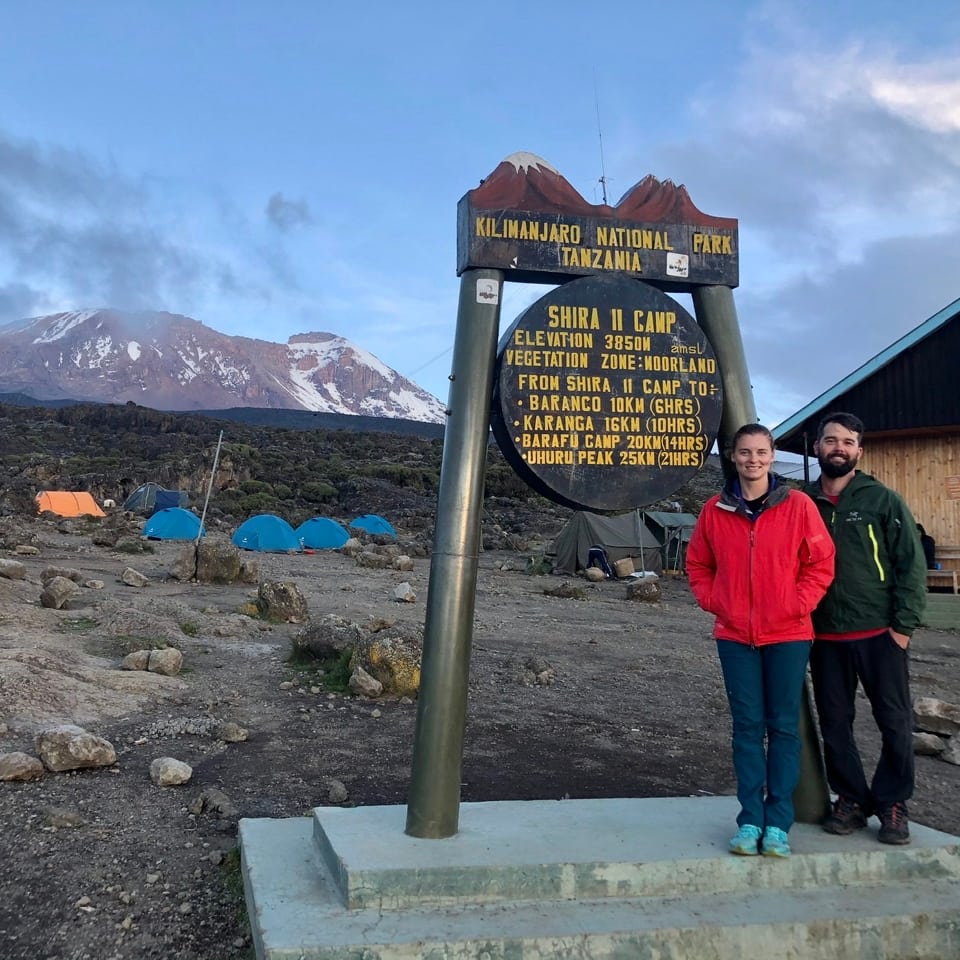
$2485.00(P/P)
Lemosho is extremely beautiful and offers a partly untouched landscape as well as varied flora and fauna. Also for the best successful climb.
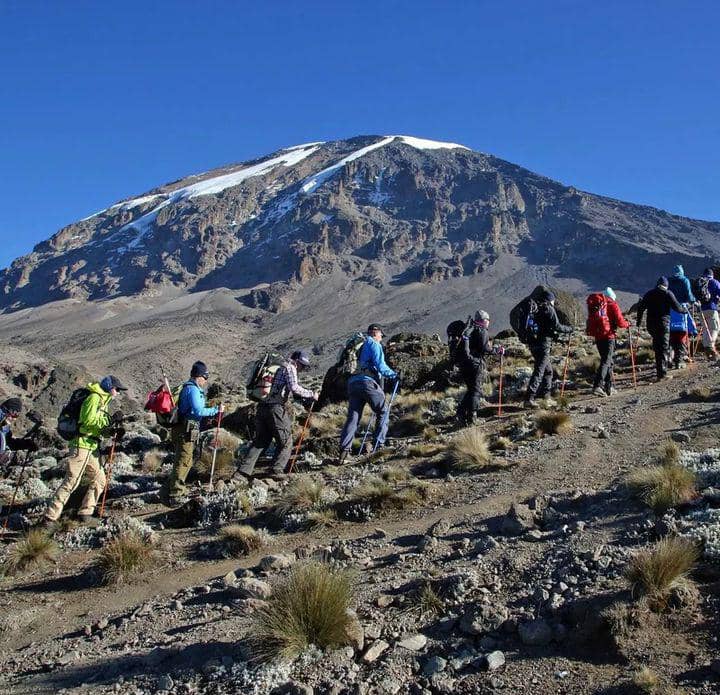
$2315.00(P/P)
Machame Route is the second most popular route to summit Mt.Kili after the Lemosho route, the route approaches from south-west.
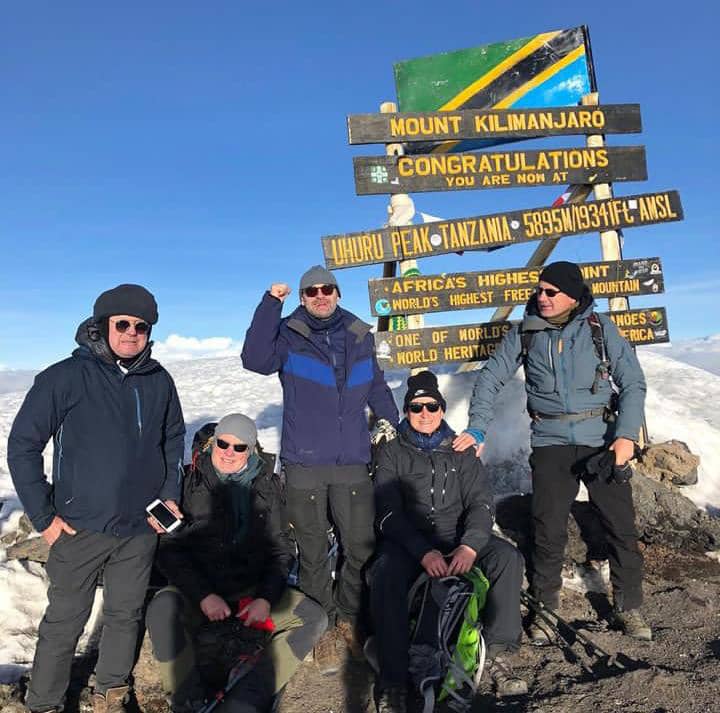
$1865.00(P/P)
Marangu route is widely known as a Coca-Cola route due to its easiest and comfortability, the only way offer hut and beds on the mountain.


